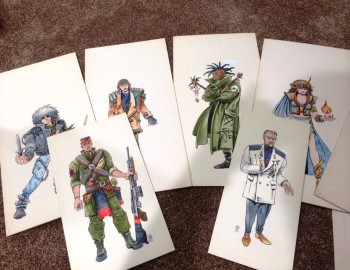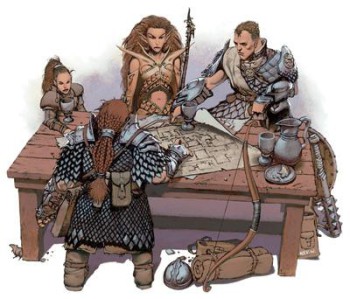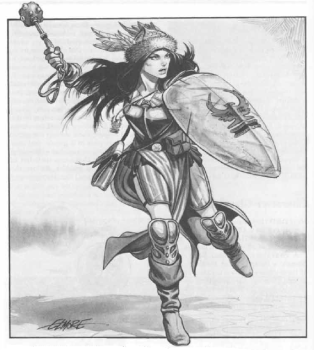Art of the Genre: The Art of the Iconic Character

By Webster’s definition, Iconic means ‘of, relating to, or having the characteristics of an icon’, which in essence reminds me of looking for the Wizard’s 1E D&D Protection from Evil spell only to be told to ‘see Cleric spell of the same name’, unless, of course, you know the word Icon means ‘a person who is very successful and admired’.
Now, having established the meaning, I intend to look at the evolution of ‘Iconic Characters’ [thus Iconic Character Classes] in the RPG setting.
It can be universally accepted that Paizo coined the phrase ‘Iconics’ with the release of its Pathfinder Adventure Paths [and their beta versions from Paizo’s Dungeon Magazine], but that is simple semantics. In reality, the first true ‘Iconics’ were from the Wizard of the Coast release of D&D 3rd Edition, namely Krusk, Jozan Vadania, Tordek, etc.
These characters were really the first to take players through the game by repeating their exploits in both artwork and description. Created by artists Todd Lockwood and Sam Wood, players from a whole new D20 generation were introduced to this new system and cut their teeth with the WotC Iconics.
However, I would contend that perhaps the definition of Iconic doesn’t have to depend on players of RPGs actually knowing the character’s name, but rather recognizing their image. If that is the case, then the role of character class Iconics goes back much further.

In my estimation, the first full color ‘Iconics’ came with FASA’s release of the Shadowrun RPG in 1989, a full decade before the advent of WotC’s D&D 3E.
Shadowrun basically blew the top off the RPG market upon its release, and still finds a hardcore fanbase supporting it today with video game releases like Shadowrun Returns & Shadowrun 5E by Catalyst. I believe this can be directly attributed not only to a great gaming concept, cyberpunk, but also artist Jeff Laubenstein’s incredible character archtype images splayed through the glossy pages of the creation section.
These images are still recognizable and beloved today, and there is no doubt in my mind that they led to the WotC designers ideas for class creation in 99.
Shadowrun, for all its groundbreaking concepts, was still a half dozen years behind TSR’s initial ‘Iconic’ character release with the Mentzer Red Box characters as done by artists Jeff Easley & Larry Elmore.

These ink-wash illustrations have become some of the all-time favorites for the OSR community and helped to launch D&D from a college dorm game in the late 1970s to a worldwide tween fad in the 1980s.
Certainly all great ideas grow from a single seed, and in this case I’m going with Elmore and Easley as the progenitors of a concept that is paramount to game design today. It is one that I’ve taken to heart myself in The Folio, not only borrowing the concept of Iconics but also taking one of Larry’s originals, Clarion the Adept, and repurposing her as the lead in my module series.
In the end, Iconics hold such power because they are direct representations of the base mechanic in any RPG, the character’s progression principle of experience that drives all players to play.
If you like what you read in Art of the Genre, you can listen to me talk about publishing, and my current venture with great artists of the fantasy field, or even come say hello on Facebook here. And my current RPG Art Blog can be found here. Also, take a look at the new AotG, RPG module Kickstarter below!
[…] Art of the Genre: The Art of the Iconic Character […]